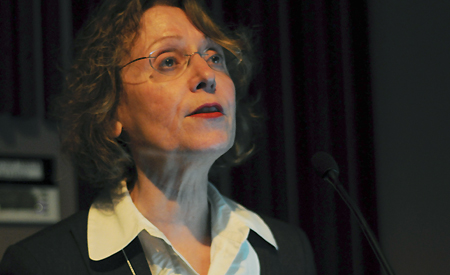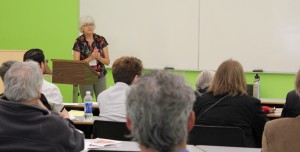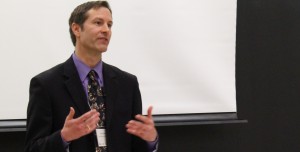
Jared Morrison, Experience Congress 2011
At the 2011 Nels Anderson Lecture, Dr. Monica Boyd, Canada Research Chair on Immigration, spoke on the impact of eliminating the mandatory Long-form census in 2010, warning that it will be damaging to Canada. This is what she had to say.
How the census worked
The 2A or “Short” form census is used most importantly by the Federal Government to determine how to allocate funding – distribution of equalization payments, Harmonized Sales Tax, etc.– and is distributed to 4/5 of Canadian households.
The 2B or “Long” form census is used for additional demographic information, including information on Aboriginals and immigrants, to determine where services will best be allocated at a local level. It enables evidence-based planning and policy making, and is distributed to only 1/5 of Canadian households.
Extensive planning is required for the census, and finalized documents are reviewed by Cabinet ministers 18 months before the fielding date. Rare modifications to the census at this stage would only go as far as clarifying the nature of certain questions. The approved census forms are then published first in the Canada Gazette, the official news medium.
2011 would have marked Canada’s 15th mandatory census under the requirements of the Constitution Act in 1867.
What happened
Although Canadian law prohibits reporting on specific happenings within the Cabinet, it is known that the decision to eliminate the mandatory Long-form census was reached sometime in December 2009 by Conservative Cabinet members without any external consultation.
Legally, the Cabinet does have the right to decide not to conduct the census, but debate on the subject typically surrounds the nature of the questions on the census, not the validity of the census itself. In 2010, however, the actual method of collecting information was called into question and altered without consulting the public – an unprecedented move for any government around the world.
Statistics Canada began to learn of the decision to eliminate the mandatory Long-form census in late-April / early-May 2010.
The forms for the 15th census were first officially published in the Canada Gazette on 26 June 2010, during the Toronto G8/G20 summits. The Gazette featured the usual Short-form census document, but the Long-form included only the section on agriculture – a massive red flag that was completely missed by the media because of the G8/G20 summits in Toronto.
On 21 July 2010, Minister of Industry Tony Clement issued this statement:
“We do not believe that Canadians should be forced under threat of fines, jail, or both, to disclose extensive private and personal information.”
The first public announcement came perfectly timed on 26 July 2010, a month after the Toronto G8/G20, and also after Parliament had closed for the summer, while there was a decreased media presence in Ottawa.
Enormous public outcry resulted in two formal, recorded hearings, the results of which were 11 in support and 497 against.
Why Eliminate the Long Form Census?
The principle argument from the Harper Government was that the Long- form was offensive to Canadians as a violation of privacy.
In the last twenty years there have been a total of three (3) registered complaints over privacy concerning Canada’s census.
Clearly, this is not evidence-based decision making, and the Harper Government quickly changed its rhetoric to blame Statistics Canada for having outlined other options. There was no mention made that these options were only presented at the request of Cabinet Ministers, who had already made the decision to eliminate the mandatory Long-form census.
Why a voluntary Long-form is bad for Canada
1. Voluntary surveys do not give an accurate representation of the group in question, because given the choice, certain individuals within that group are more likely to answer than others. In this case, it would result in an inaccurate representation of the Canadian population.
2. The Contagion Effect – Because they do not have to respond to this survey, participants are less likely to respond to future surveys and are more likely to view those surveys as less important.
3. Decreases public confidence in “official” data, and implicitly discredits future data collected.
4. Breaks ground for the 2A Short-form to become voluntary as well.
Alternate forms of information gathering are ineffective
Population Registers, for instance, include business data as well as data from other non-government sources. More importantly, this data is not bound under the Statistics Act and therefore not confidential.
Statistics Canada works extremely hard to maintain that confidentiality.
Population Registers can take up to ten years to be effectively implemented, and even after that incredible expenditure of time and resources the information collected –such as credit card statements and cell phone bills– is unreliable at best.
Statistics Canada did not ask for this
At no point did Statistics Canada advocate for the elimination of the mandatory Long-form census, and on 21 July 2020 Chief Statistician Munir Sheikh announced his resignation in protest. The following is an except from his statement:
“I cannot reveal and comment on this advice because this information is protected under the law. However, the government can make this information public if it so wishes.
I want to take this opportunity to comment on a technical statistical issue which has become the subject of media discussion. This relates to the question of whether a voluntary survey can become a substitute for a mandatory census.
It can not.”





















